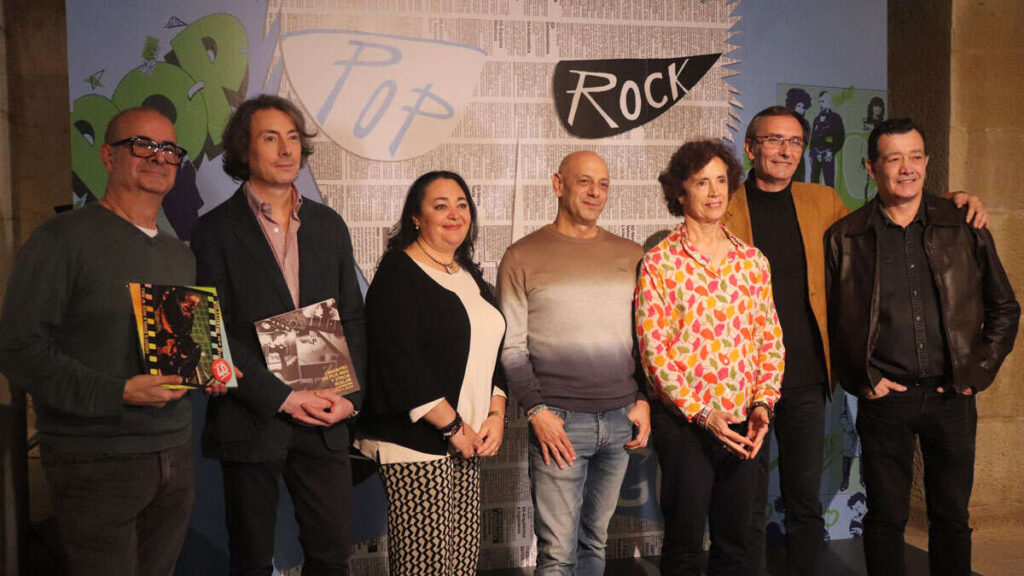
In only three daysthe Aragonese music scene changed radically in the 1980s with the Pop, rock, and other rock and roll showcase. It was one of the events with the greatest cultural explosion of those that took place in Zaragoza in the 80’s, marked throughout the Spain by constant experimentation. Heterogeneous artists, musicians, creators, cartoonists, gathered at the French Pavilion of the Zaragoza Trade Fair. to give free rein to their talent. Those days went down in the contemporary cultural history of the city, and now their memories are part of a commemorative exhibition when 40 years of its celebration.
Luis Linareswho was part of the Organizing Group of the Pop, Rock and other Rolls Exhibition, explained that this exhibition was born out of the need for “to celebrate that 40 years later, we still have the echo of that show”.. The aim of the exhibition is to make the public feel part of that great event through the large-scale reproduction of photographs of the event, life-size silhouettes of some of its protagonists and videos rescued and restored for the occasion. It will also be possible to see emblematic objects of the period such as fanzines and comics, musical instruments, etc. The exhibition will be complemented by talks and acoustic concerts, to be announced in the coming days.
The tour starts at late 1970s and early 1980s.. The opening of new venues where young people could gather and the flourishing of urban tribes changed the environment of Zaragozawith an awakening of young culture. This had its first high point with the I Rock Contest held in 1982, from which some of the names that would mark the musical panorama of the city in the following years would emerge. This exhibition can be visited until February 2 in the exhibition hall Pignatelli Warehouses.
Two years later, a motley group of young people integrated in the GOM (Grupo Organizador de la Muestra) launched themselves into the adventure of creating a event in which music would be the main thread.but in which other artistic-cultural manifestations/agitations emerging at that time also had their place: comics, videos (an incipient art at that time), fashion, free radios… From there was born the I Muestra de Pop, rock y Otros Rollos, which occupies the central part of the exhibition.
Supported by the Delegation of Youth of the Zaragoza City Councilput on stage 50 local bandsamong which were Distrito 14, Zumo de Vidrio (the band in which the Valdivia brothers played at the time), Proceso Entrópico, which included Enrique Bunbury, and Golden Zippers, who shortly after changed their name to Más Birras. More than 25,000 people passed through the French Pavilion of the former Trade Fair on March 23, 24 and 25, 1984, many of which are also portrayed in the images and among the testimonies that close this part of the exhibition, along with those of the organizers and participants in those three days of madness.
Although all its activity was centered on one weekend, the cultural hangover of the Festival was much longer and the last part of the exhibition is dedicated to it. After the Festival, groups began to multiply, some of which were to leave their mark, starting with Héroes del Silencio and continuing with Más BirrasNiños del Brasil, Los Especialistas, Días de Vino y Rosas and many more. Two concert halls appeared with regular programming (M-tro and En Bruto) and the visits of big stars and international bands ceased to be something anecdotal.
The record label Grabaciones Interferencias set out to launch several of the most outstanding names in Aragonese rock at a national level, and the Medio Kilo de Rock contest also contributed to the projection of new bands, multiplying the value of Zaragoza as a cultural focus.
